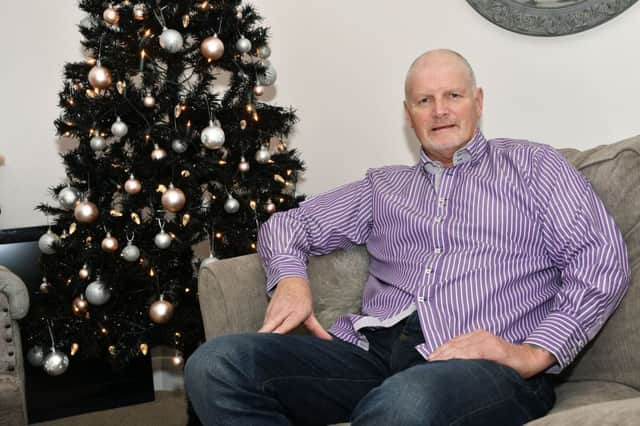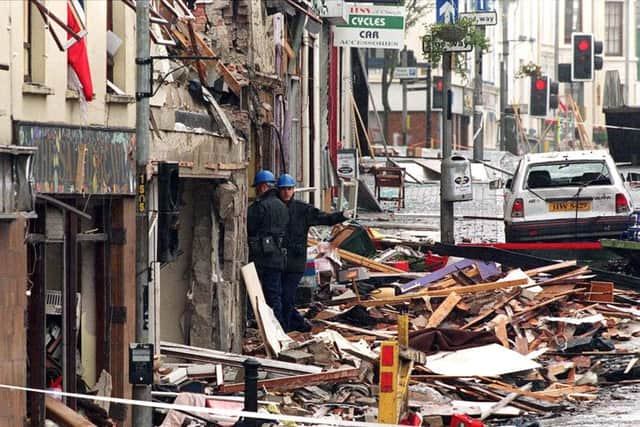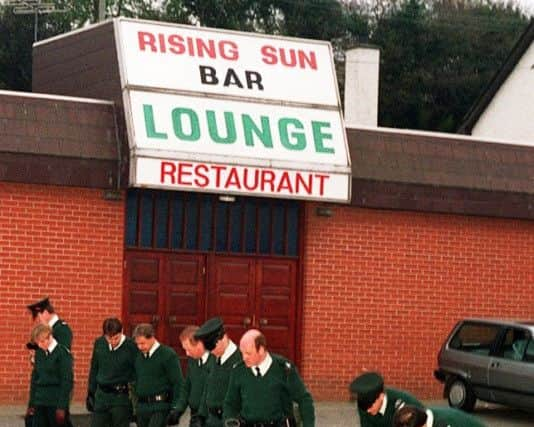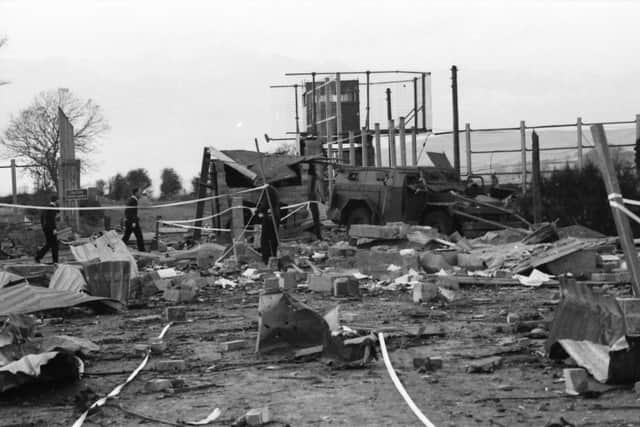'˜The number of emergencies you'd attend was phenomenal'


It was a time before the impact of trauma on frontline medical services was fully, or even partially, understood. And in the case of the ambulance men and women dealing with dead and mutilated bodies left behind by acts of terrorism, many turned to each other to help cope with sights and feelings that nobody here should have expected to experience.
Despite being first on the scene of some of the worst atrocities inflicted on Northern Irish communities, former paramedic Adrian McAuley looks back with a degree of fondness to that time, when the relationship between the men and women of the ambulance service was as close and inter-dependent as a family.
Advertisement
Hide AdAdvertisement
Hide AdReal family too played its part, especially in Adrian’s case as his wife, Nolene, also worked in the health service, as a radiographer, and understood what he and his colleagues were dealing with on an almost daily basis.


But in those times, before trauma counselling was widely available to them, members of the ambulance service relied mostly on those who best understood the impact of what they were dealing with - each other.
Chatting with father-of-four Adrian McAuley in his home in Londonderry’s Waterside, and listening to him describe some of his experiences, it is obvious that the memories he finds most difficult to talk about involve children.
He devoted all of his working life to people’s health and safety, and even after retiring in the middle of last year, still spends much of his time working in public safety and helping train organisations and individuals in First Aid. He started work with the NHS in supplies, before an opportunity came up to join the NI Ambulance Service.
Advertisement
Hide AdAdvertisement
Hide Ad“I was 28, and I was really, really happy,” he recalls. “Every day was different. No two days were the same. You made great friendships.


“Bombings and shootings weren’t unusual, though obviously in some incidents what made them especially difficult was the number of casualties. Hopefully people working in emergency services today won’t have to experience the same thing.
“And I have to praise the Ambulance Service and Health Service for the work done these days in helping staff deal with trauma. During the Troubles, we didn’t have that and we didn’t even know we could be suffering from trauma.”
So, how did he deal with the psychological impact of working with dead and mutilated men, women and children following bombings, mass shootings or even accidents?
Advertisement
Hide AdAdvertisement
Hide Ad“We helped each other. There was nearly always somebody close by who had experienced a situation before and knew how to help you cope with it,” he tells me.


Or, he admits, he and his colleagues just tried to put events to the back of their minds, a coping mechanism made easier by the fact that they had little time to come to terms with one serious incident, before having to move on to another.
Adrian says: “Even though it was a very difficult job, there were such happy times too. You wanted to learn - and I don’t think we knew enough to realise we were traumatised.
“The Ambulance Service back then was one where you pulled your socks up and got on with it. In later years they brought in trauma counselling, but back then it wasn’t heard of and maybe it was something that just wasn’t spoken about.
“The number of emergencies you’d attend was phenomenal.”


Dealing with incidents involving children left their mark.
Advertisement
Hide AdAdvertisement
Hide Ad“Nobody wants to find themselves in a situation especially where there was a child involved,” he admits. “I once was extremely unfortunate on night duty, when the first and last calls I had were cot deaths.
“They were particularly disturbing. It’s quite harrowing. But in some ways, the ‘busy-ness’ of the service was a benefit, because you didn’t get much time to mull things over.
“I’d love to be able to count the days when I thought I’d seen it all, only to find I had to deal with something new a few days later.”
Indeed, the worst atrocity that Adrian McAuley found himself involved with came after he and his colleagues could justifiably have believed that at last, they really had seen it all.
Advertisement
Hide AdAdvertisement
Hide AdNorthern Ireland was embarking on the Peace Process, and there was an air of great optimism - until the Real IRA shattered that peace and hope with a massive car bomb planted on a busy Saturday afternoon in Omagh.


Like many others, Adrian wasn’t on duty at the time, but responded to the cries for help from the Co Tyrone town.
On that day, August 15, 1998, Adrian had just returned from England and was contacted by his operations director. Soon, he was in the midst of the most horrific act of violence ever perpetrated in Northern Ireland - a bombing that left 29 people dead (including a woman pregnant with twins) and 220 injured. Twelve of the dead were children or teenagers.
Adrian recalls: “He (operations director) just told me to get a vehicle, that we were going to Omagh.
Advertisement
Hide AdAdvertisement
Hide Ad“I was in civvies but put on an ambulance jacket. Our crews were off the site when we got to the scene because there was a suggestion of a secondary device. A lot of the bodies were laid in Scarf’s Entry.
“A decision was made that all of the bodies would have to be bagged and taken to a temporary morgue.
“I and another paramedic, Adrian Thompson, who has sadly since died, decided that we would bag all the bodies and as the crews came, we allocated them to be taken to the morgue.
“We decided that we would dig deep ourselves and therefore cut down the time that the crews would be exposed to this.”